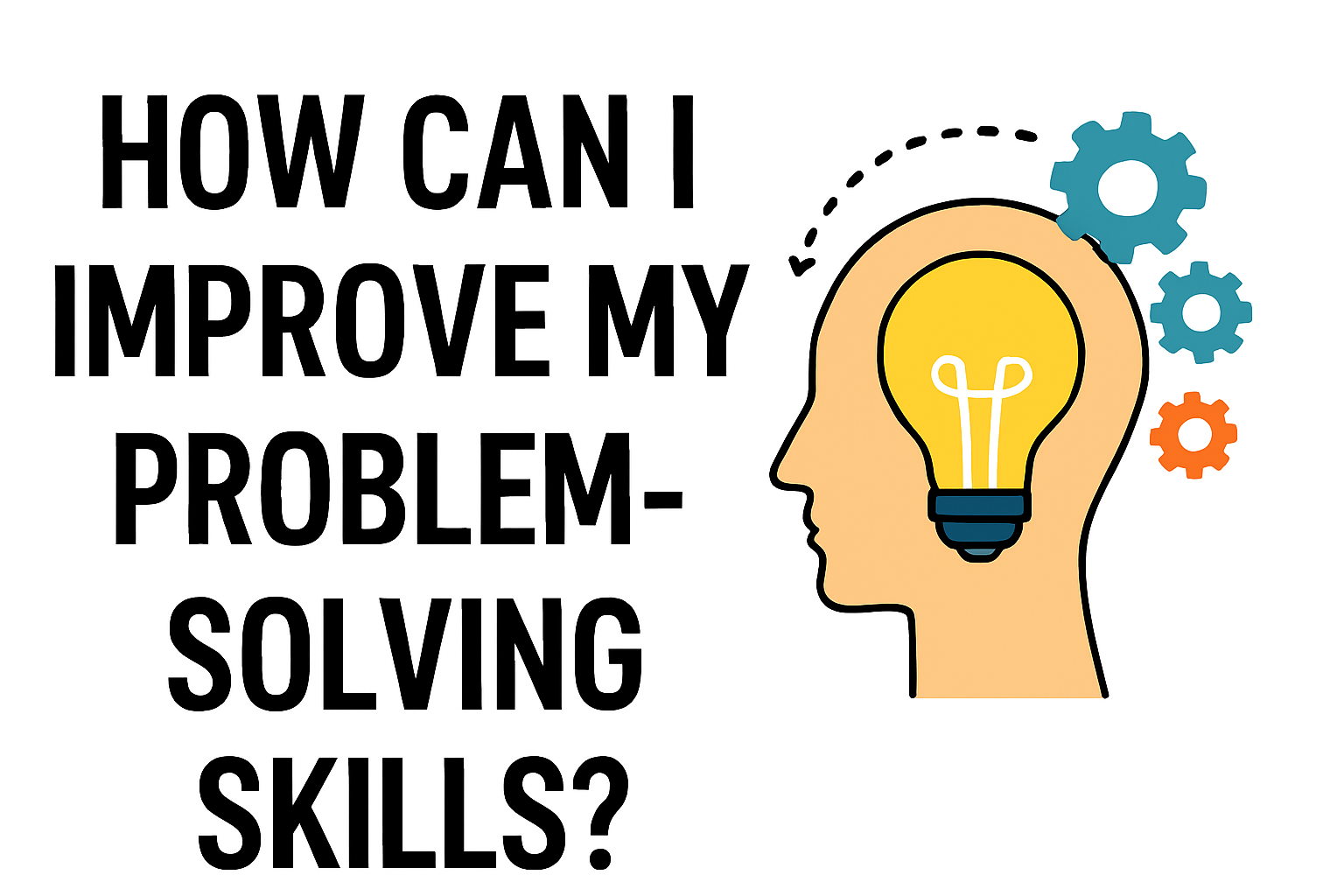Problem-solving is one of the most vital skills for anyone pursuing a career in technology. Whether you’re an IoT enthusiast, a software developer, or a data analyst, your ability to analyze challenges and design effective solutions determines your success. In the ever-evolving tech world — where innovation is constant — problem-solving isn’t just a skill; it’s a mindset.
At Curiosity Tech Nagpur, we believe that mastering problem-solving sets the foundation for strong technical expertise and career growth. Through our hands-on IoT and technology courses, learners develop analytical thinking, creative reasoning, and real-world problem-solving techniques that prepare them for professional success.
What Is Problem-Solving and Why Is It Important in Technology?
Problem-solving is the process of identifying, analyzing, and resolving issues effectively and efficiently. In the context of technology, it means breaking down complex systems or errors — whether in code, hardware, or data flow — and creating logical, innovative solutions.
In industries like IoT (Internet of Things), problem-solving drives innovation. For example:
- Engineers troubleshoot connectivity issues between sensors and cloud systems.
- Developers optimize code to reduce latency.
- Analysts interpret massive datasets to identify operational inefficiencies.
Without strong problem-solving skills, even the most advanced technologies fail to deliver meaningful results.
The Importance of Problem-Solving for Students and Professionals
For tech students, especially those from Nagpur and nearby regions, problem-solving isn’t just about coding — it’s about thinking critically, experimenting, and applying knowledge practically.
Here’s why it matters:
- Enhances Employability: Companies like IBM, Microsoft, and NASSCOM emphasize problem-solving as a top hiring skill.
- Boosts Confidence: You learn to approach any challenge with structured logic.
- Encourages Innovation: Most tech breakthroughs — from IoT automation to AI algorithms — come from people who think differently.
- Bridges Academic and Real-World Skills: Problem-solving transforms theory into application, which is key in Curiosity Tech’s project-based learning model.
Types of Problem-Solving Skills in Technology
Problem-solving in tech involves both technical and non-technical abilities. Let’s break them down:
1. Analytical Thinking
Understanding data, patterns, and system behavior.
Example: Debugging code by tracing logic and variable states.
2. Logical Reasoning
Creating structured solutions step-by-step.
Example: Designing algorithms or decision trees in IoT systems.
3. Creativity and Innovation
Thinking beyond conventional approaches to build smarter solutions.
Example: Using machine learning in IoT to predict device failures.
4. Collaboration and Communication
Working with teams to share insights and solutions clearly.
Example: Presenting your IoT project findings at Curiosity Tech Nagpur’s workshops.
5. Technical Proficiency
Hands-on knowledge of tools, coding languages, or cloud platforms.
Example: Solving real-time data issues using AWS IoT or Azure IoT Hub.
How IoT Encourages Real-World Problem-Solving
IoT is one of the best technologies for developing practical problem-solving skills. Through real-world projects, learners get to:
- Connect sensors and devices to cloud platforms.
- Collect, analyze, and interpret real-time data.
- Automate processes in industries like healthcare, agriculture, or manufacturing.
For example, IoT-based smart irrigation systems in Maharashtra use sensors to monitor soil moisture and weather conditions — optimizing water use for farmers. Students at Curiosity Tech Nagpur build similar solutions in their IoT projects, developing both creative and analytical problem-solving abilities.
Steps to Improve Problem-Solving Skills
Step 1: Understand the Problem Clearly
Spend time analyzing what the problem really is. Break it down into smaller, manageable parts.
Tip: Ask “Why” multiple times — each answer reveals a deeper layer of the issue.
Step 2: Research and Gather Information
Explore how others have solved similar challenges. Use trusted sources like:
Step 3: Brainstorm Possible Solutions
Think creatively — list as many approaches as you can. No idea is too small or big at this stage.
Step 4: Test and Implement
Select the most practical solution and experiment with it. Tools like Arduino, Raspberry Pi, and cloud simulators are excellent for IoT learners.
Step 5: Evaluate and Improve
After implementing your solution, review its success. Ask questions like:
- Did it solve the root problem?
- Can it be made more efficient?
- What did you learn from the process?
At Curiosity Tech Nagpur, learners follow this problem-solving loop during IoT project development, ensuring they gain both technical mastery and a solution-driven mindset.
Real-World Problem-Solving Examples in Nagpur and Maharashtra
- Smart Traffic Systems:
Nagpur’s city management teams use IoT and AI-based traffic solutions to monitor congestion and adjust signals dynamically. - Energy Optimization in Industries:
Local industries employ sensor-based IoT monitoring systems to reduce electricity waste. - Healthcare Innovations:
Startups from Maharashtra are developing IoT-enabled health trackers for early diagnosis of chronic diseases.
These use cases reflect how Curiosity Tech’s training helps students align their learning with real-world applications.
How Curiosity Tech Helps You Become a Better Problem Solver
At Curiosity Tech Nagpur, our training programs go beyond theory. We emphasize project-based learning, where students:
- Build IoT prototypes using real sensors and cloud tools.
- Participate in hackathons and coding challenges.
- Collaborate on multidisciplinary problems involving data science, AI, and networking.
You can visit us at 1st Floor, Plot No. 81, Wardha Rd, Gajanan Nagar, Nagpur, or contact us at +91-9860555369 or contact@curiositytech.in to explore upcoming IoT batches and problem-solving workshops.
Follow us on:
- Instagram: curiositytechpark
- LinkedIn: Curiosity Tech
- Facebook: Curiosity Tech
Challenges in Developing Problem-Solving Skills
While rewarding, improving problem-solving skills can be challenging due to:
- Lack of Real-World Exposure: Many students focus on theory over application.
- Fear of Failure: Mistakes are part of the learning process — they help refine understanding.
- Poor Collaboration: Working alone limits creativity and perspective.
Curiosity Tech’s hands-on learning model ensures students overcome these barriers through teamwork, mentorship, and live project experience.
Local Career Opportunities for Problem Solvers in Tech
If you’re in Nagpur or nearby regions, developing problem-solving skills opens doors to careers in:
- IoT Development
- Software Engineering
- Data Analysis
- Cloud Computing
- AI/ML Research
Many local startups and organizations seek professionals who can think analytically and creatively — and Curiosity Tech’s training helps bridge this talent gap.



